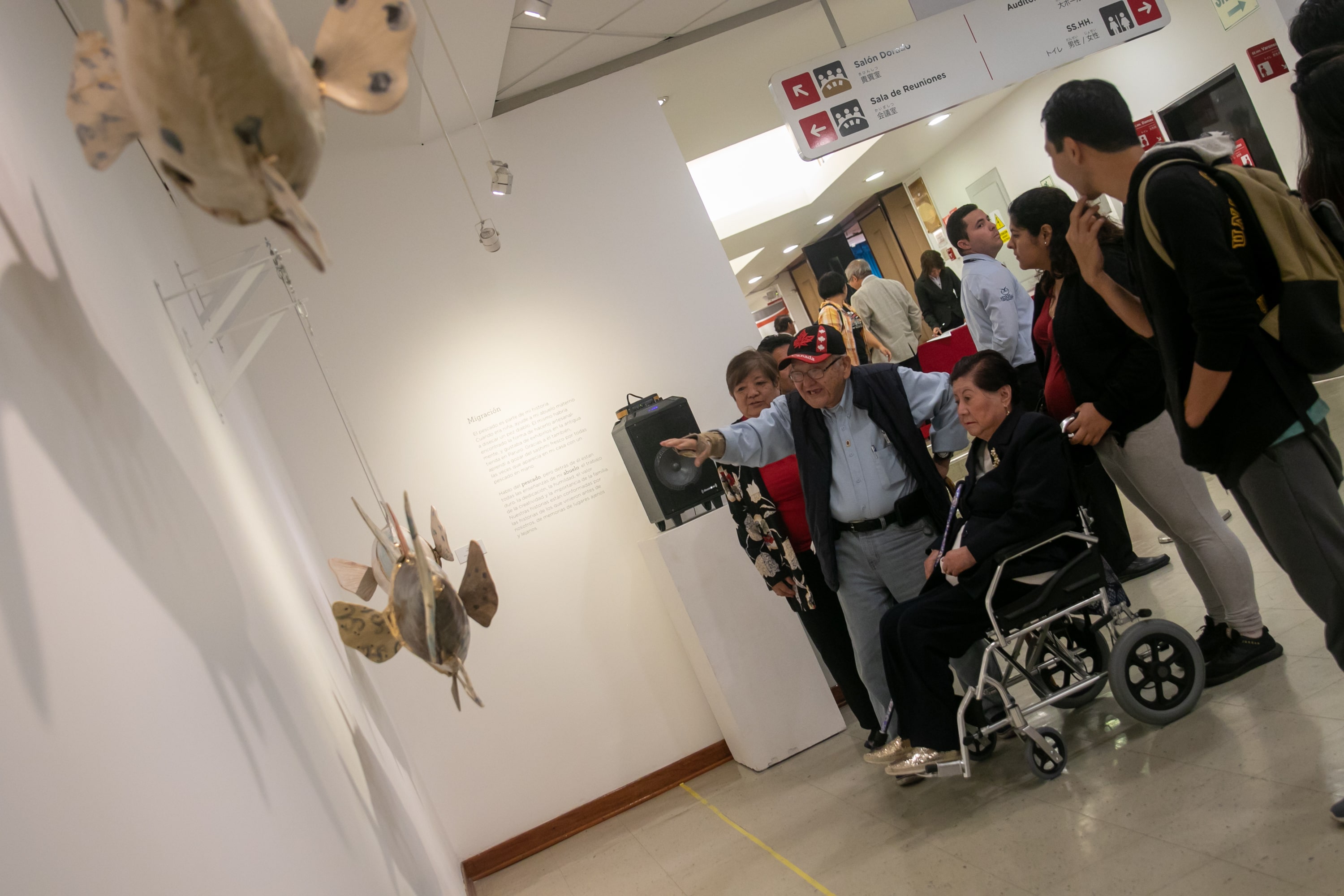D11. Migración
Craftsmanship / HeritageKomorebi Art Collective with: Meche Tomotaki, Sachiko Kobayashi, Nori Kobayashi, Tamie Tokuda @ Centro Cultural Peruano Japonés,
Exhibition pieces
Grouper or hata in Japanese can be found in the Pacific Ocean. In Japan, it is used to make sashimi. In Lima, they use it to make dishes like ceviche. If we see the sea not as a void but as a volume, it becomes the territory that connects Peru with Japan. Fish own this space and are a common element between these two very different cultures.
In my case, fish is part of my story. The most memorable memories I have with my maternal grandfather are those that revolve around it. When I was a child, I helped my grandfather stuff a devilfish. He himself would have found a way to do it by hand and at home, and he liked to display them on the countertop in the old store in Paruro, Lima’s old city center. It is also thanks to him that I learned to enjoy sashimi for all the times he showed up at my house with a fresh fish in hand.
I talk about fish, but behind it are all my grandfather's teachings: hard work, dedication, honesty, respect and the importance of family. Our stories are made up of the stories of those who came before us, of memories of foreign and faraway places. Each person, like the leaves in the komorebi, reveals different aspects of the same origin.
Migración is an installation of three hata fish. Inspired by my grandfather’s resourcefulness, I explore ceramics with a curious eye. Experimental techniques such as cuts and sections, assembly and Japanese-style repair are used along with traditional Okinawan-inspired patterns.
_______
Komorebi Collective Exhibition
Av. Gregorio Escobedo 803, Lima, Perú
1.12.19-27.12.19
Press release ︎HERE
______
About Komorebi and the Nikkei1 culture.
KOMOREBI is a japanese word to describe the sun's rays filtering through the leaves of the trees.
It refers to a sensation generated by an effect of nature at a given moment. The three elements involved: the sun, the leaves and the ground participate in the game between light and the cast shadows that we actually see.
If we visualize the sun as the origin of our ancestors and the soil as the land on which we grow, the immigrants would be the leaves that create the play of light and shadow that we see in the komorebi. It is through them that we have learned what we originally know about Japan. Their customs became our customs, sometimes without even us knowing the country they once belonged to. The leaves are that element that stands between the light and the earth, generating an atmosphere so powerful that it is worthy of being named with a word. For me, that particularity describes what it is to be a Nikkei.
1 A term to refer to Japanese descendants born abroad.






